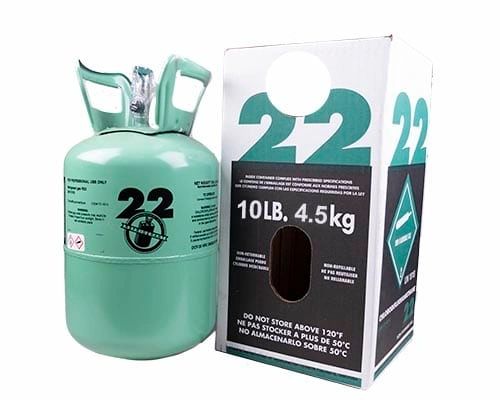The R-22 Refrigerant Phaseout- What to do? Tax breaks available!
Since the 1950s, Freon (R-22) has been the industry standard for air conditioning refrigerant—a substance needed for an HVAC system to cool the air. Unfortunately, it’s also damaging to the environment. The Environmental Protection Agency (EPA) enacted an R-22 phaseout, and by 2020, Freon will be illegal to produce or import. Refrigerant is expensive now, and it’s only getting pricier as the 2020 R-22 phaseout looms. Here’s what you need to know now.
What is R-22?
In the simplest terms, chlorofluorocarbon (CFC) refrigerants like R-22 are gases that attract warm air from surrounding sources. Through the use of HVAC coils, the refrigerant compresses the warm air into liquid that is then released back into a gaseous state, causing a cooling effect.The most efficient refrigerants are those that take less pressure to compress the warm air into liquid and that have the highest heat absorption rate when returning to a gaseous state. Freon, or R-22, is an efficient refrigerant, which is why it was the industry standard for so long.

Why is R-22 being phased out?
In the 1970s, scientists discovered a link between CFCs and the depletion of the ozone layer. Thus, under the Clean Air Act of 1990, R-22 must be phased out and replaced with R-410A or other EPA approved refrigerants by December 31, 2029.R-410A (aka Puron) does not contribute to ozone depletion because it’s fluorine-based and contains no chlorine. As well as being nonflammable, noncorrosive, and neutral to the environment, R-410A is also widely touted as being more energy efficient than R-22. That’s an environmental win-win!
What’s happening on January 1, 2020?
As of 2010, the EPA prohibits the manufacture and installation of any new R-22 appliances. According to the R-22 phaseout schedule, effective January 1, 2020, manufacturers can no longer produce new R-22 refrigerant. However, we expect ample inventory of new R-22 through 2020. In addition, reclaimed or purified R-22 is approved for use until December 31, 2029. R-22 is not running out soon! In fact, reclaimed or purified R-22 should be available for HVAC repairs until at least 2025.
How does this affect homeowners?
The greatest cost in repairing existing R-22 systems is in the price of R-22 itself. As manufacturing of R-22 slows to convert to R-410A and aging systems escalate the demand, prices for R-22 refrigerant increase as well. Homeowners can expect to pay $125 or more per pound for R-22 if a repair is needed.

Reduce your tax bill when you replace your R22 air conditioner this year
The new tax law includes allows businesses to immediately expense heating, air conditioning and ventilation systems.
Under the new law, you can write off the entire expense of all components in the year you purchase them.That’s a big change from the old tax rules. That can amount to a tax break of $5000 or more for an average system! For a large commercial system with many components, the savings can be substantial.
Before the new law, you had to depreciate the cost of HVAC components over a period of 39 years. We wish the equipment lasted that long! Under the old accounting rules, your tax write off would be a few hundred dollars when you purchased an average $14,000 HVAC system.
Here’s an example from the Air Conditioning Contractors of America (ACCA):
“A restaurant owner installs a new heating and air-conditioning rooftop unit. The equipment and labor for installation cost $14,000. Under old depreciation rules, the restaurateur could only claim approximately $350 in depreciation expense annually over 39 years. Under the new law, she can deduct the full cost of the HVAC equipment
(including installation costs) of $14,000 from her business income the year of the purchase and installation. At the top marginal tax rate that would be applied to this purchase, this will save her $5,180 in taxes.”
The ACCA has also published a helpful infographic showing how business owners can save money with an HVAC system purchase under the new tax law. And, there’s a website about the Section 179 tax changes that provides sample calculations.
